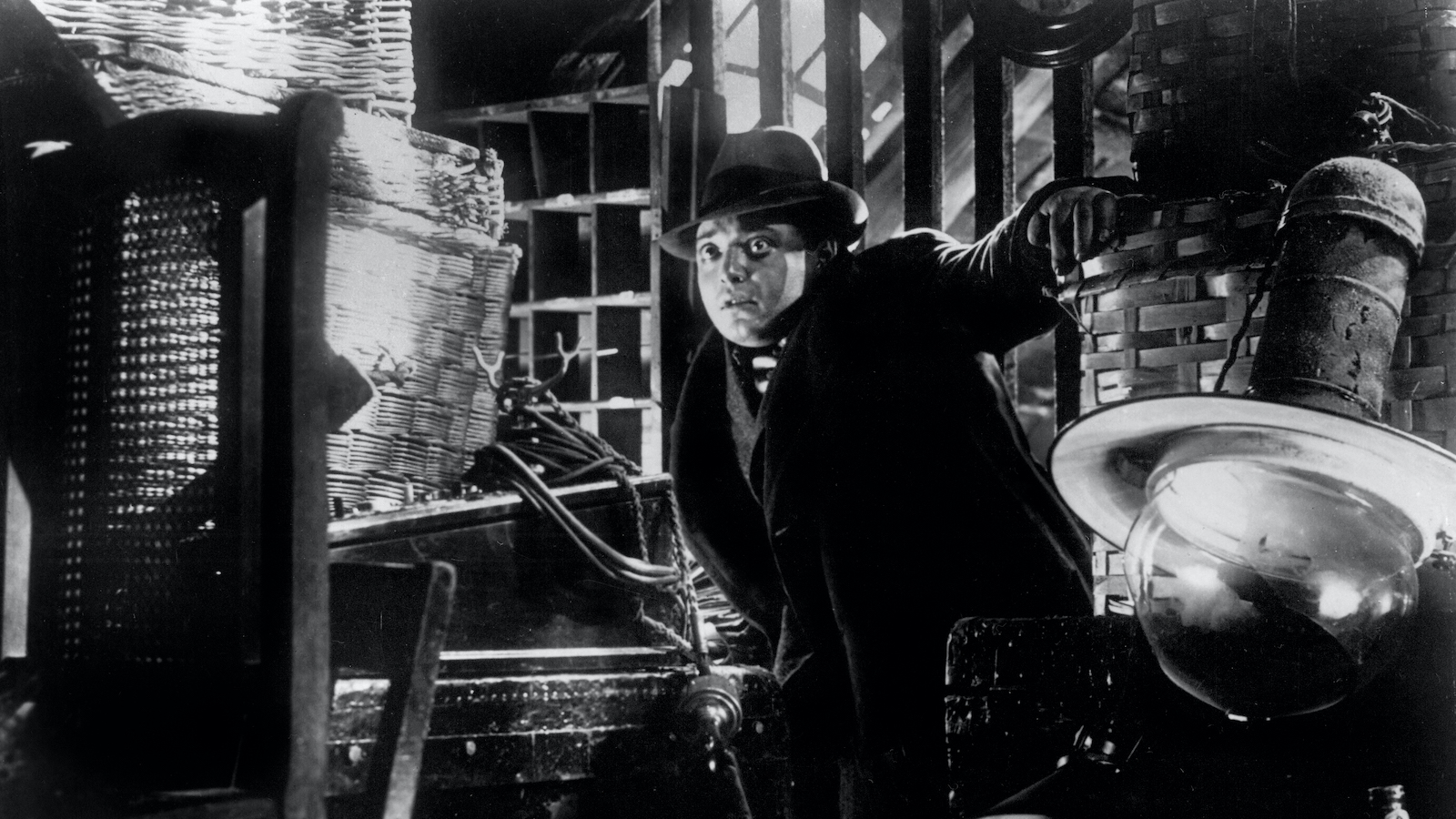my favorite movies of 1931:
(1) City Lights
(2) Frankenstein
(3) Monkey Business
(5) M
favorite of 1931:
City Lights (Charlie Chaplin, Virginia Cherrill, Harry C. Myers. Directed by Chaplin.)The last line of this silent movie might be one of the most poignant lines in any movie ever made. A Criterion essay describes Chaplin’s mix of comedy and drama in City Lights:
He turns us at will between the funniest routines ever put on film and a poignant fairy tale, but never plays our empathy cheap. He wants us to cry only once. … Chaplin gives us the single most memorable image in his entire oeuvre … and we realize we have never seen the Tramp so clearly, so pitilessly close up.
You can stream City Lights on the Criterion Channel, which also has extras including commentary. (If you don’t subscribe, try a free trial.) Or stream it on Max.
2nd favorite of 1931:
(Boris Karloff, Colin Clive, Mae Clarke. Directed by James Whale.)
In Frankenstein, based on Mary Shelley’s 1818 novel, director James Whale created images that spawned endless imitations: the mad scientist, Dr. Frankenstein (Colin Clive), accompanied by a hunchbacked assistant, surrounded by wildly whirring contraptions in a spooky, cavernous lab. Dr. Frankenstein pieces together dead human body parts and animates them with massive jolts of electricity. You know what comes next: “It’s alive! It’s alive!” — but of course, the monster will wreak havoc, and it will dawn on the scientist that he shouldn’t have “played God.”
Underneath that heavy-handed moral is a subtler takeaway. Put aside the talk of how the scientist unwittingly gave the monster a “criminal” or “abnormal” brain, and ask how bad this monster really is. The most memorably disturbing thing he does in the movie seems to be an accident by someone who’s really a tall baby. After all, Dr. Frankenstein said he was creating a new life, not bringing a dead person back to life. Frankenstein’s “monster” (played by Boris Karloff in the performance that launched his career) is born into difficult circumstances and isn’t given a fair chance. People see the worst in him. They form an angry mob. The real point of the movie isn’t that playing God can create a terrible monster, but to force us to ask: who are the real monsters?
You can stream Frankenstein on these sites.
Update: I chose the sequel, Bride of Frankenstein, as one of my favorite movies of 1935.
3rd favorite of 1931:
Monkey Business(Groucho Marx, Harpo Marx, Chico Marx, Zeppo Marx, Thelma Todd. Directed by Norman McLeod.)
The Marx Brothers had a new energy in their third movie. It’s their first that was conceived as a movie from the beginning instead of being adapted from a play, and you can tell the difference between this and their previous movie, Animal Crackers (my favorite of 1930).
In this scene, all four Marx Brothers are trying to sneak off a boat where they’ve been stowaways. In an attempt to use a stolen passport from the famous actor/singer Maurice Chevalier, they take turns impersonating him singing a song that’s supposed to go: “If the nightingales could sing like you/They’d sing much sweeter than they do/For you brought a new kind of love to me.” One problem with that plan is that one of the brothers, Harpo, is mute…
4th favorite of 1931:
(Fredric March, Miriam Hopkins. Directed by Rouben Mamoulian.)
This version of the 1886 Gothic novella is better than you’d expect! Back in 1931, it tackled issues like abuse, mental health, and drug addiction in a way that still feels arrestingly relevant. Fredric March is excellent as the title character(s), but Miriam Hopkins steals the show as the woman who’s not his fiancé.
Stream Dr. Jekyll and Mr. Hyde on these sites.
5th favorite of 1931:
M[German]
(Peter Lorre, Gustaf Gründgens. Directed by Fritz Lang.)
This is a crucial bridge between earlier, more surreal German expressionist movies like The Cabinet of Dr. Caligari (1920) and the more familiar genres of film noir and serial killer movies. M is also transitional in another way: it straddled the silent and talkie eras by being largely shot as if it were a silent movie before sound was overdubbed in post-production (see this video for details).
Stream M on the Criterion Channel (try a free trial if you don’t subscribe), Max, Kanopy, or other sites.
Click here for the full list of my favorite movie(s) of each year from 1920 to 2020.




Comments
Post a Comment
Thanks for submitting a comment on my movie blog! 🎬 Your comment won’t show up here right away. 😐 To make sure your comment gets seen, I recommend sharing this post on social media and saying whatever you feel like! 🤓